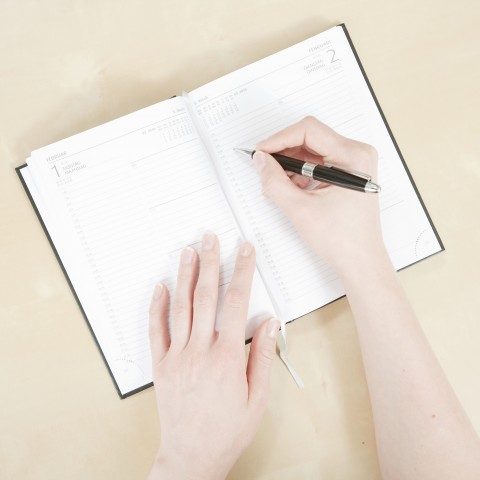
Would you like to take an official Dutch language proficiency test? If that’s the case, wouldn’t you love to receive some handy tips and tricks to make sure you pass? If so, this guide will definitely come in handy.
In the Netherlands, there are two official language proficiency tests: the NT2 Dutch as a Second Language State Exam (Staatsexamen NT2) and the Certificate Dutch as a Foreign Language (Certificaat Nederlands als Vreemde Taal, CNaVT). In this guide, we’ll only focus on the NT2 Dutch State Exam, as it’s the most common one they ask for when you’re looking for a job or applying for a university or school in the Netherlands.
We’ll go over everything you need to know about the NT2 Dutch language proficiency exam: what it is, how to sign up, and why you should care. We’ll also give you some insight into the different language levels and how they relate to the NT2 Dutch exam.
Finally, we’ll dive into the structure and content of all four sections of the exam, and provide you with some tips on how to practice for and master this most important Dutch test.

 Table of Contents
Table of Contents
- What is the NT2 Dutch as a Second Language State Exam?
- A Test for Two Levels
- How to Succeed on the NT2 Dutch State Exam
- How DutchPod101 Can Help You Learn More Dutch
1. What is the NT2 Dutch as a Second Language State Exam?

The NT2 Dutch as a Second Language State Exam is the national Dutch proficiency exam for non-native adult speakers who want to work or study in the Netherlands. The diploma received after passing this test is officially recognized by the Dutch government. You can find more details about the exam right here.
1- Why Take the Exam?
There are many possible reasons why you’d want to pass the NT2 Dutch exam:
- To study at a Dutch school or university
- To find a job in the Netherlands
- To apply for a Dutch residence permit
- To request a Dutch citizenship
- → The Diploma of the NT2 Dutch State Exam meets the Dutch language requirements for integration: Inburgering (“Integration”) and Naturalisatie (“Naturalization”).
You can only take this Dutch language exam in the Netherlands.
- → Would you like to do a test just “for fun” or to discover your level? In that case, the NT2 Dutch State Exam might be too much trouble, and it would be better to take a different Dutch test.
2- What Does the Exam Look Like?
The exam has four sections:
1. Lezen (“Reading”)
2. Schrijven (“Writing”)
3. Spreken (“Speaking”)
4. Luisteren (“Listening”)
The tests are all computer-based. To obtain the diploma, you need to pass all four sections.
- → What happens if you fail one of the sections? It’s possible to re-do any of the four parts, but you won’t be able to apply for your diploma until you receive all four certificates.

3- NT2 Exam Registration
You can register for the exams via the DUO departmental website. The examinations are held several times a year at seven different locations in the Netherlands:
- Amsterdam
- Eindhoven
- Amersfoort (only on predetermined Saturdays)
- Oisterwijk
- Rotterdam
- Rijswijk
- Zwolle
To be able to participate, you’ll need to have a valid ID.
How much does it cost? The NT2 Dutch exam costs €45,00 per language skill. So for all four sections, it will cost you a total of €180,00.
2. A Test for Two Levels
1- The different levels of the NT2 Dutch State Exam
There are two NT2 exam levels that you can choose to take:
- The NT2 program I – This exam is meant for people who want to work or study on a vocational education level (MBO). This is considered a Dutch B1 exam according to CEFR.
- The NT2 program II – This exam is intended for people who want to study or work on a hogeschool (“higher education,” HBO) or university level (WO). The language level of this program is B2 (CEFR).
2- Common European Framework of Reference for Languages (CEFR)
Before you can choose the best test for your level, you need to be familiar with the CEFR system (Common European Framework of Reference for Languages). This classification shows your proficiency level in a foreign language on a six-point scale, from A1 for beginners to C2 for those who have mastered a language.
| Level | Description | You can: |
| A1 | Beginner |
|
| A2 | Lower-Intermediate |
|
| B1 Level of the NT2 program I | Intermediate |
|
| B2 Level of the NT2 program II | Upper-Intermediate |
|
| C1 | Advanced |
|
| C2 | Proficient |
|
3. How to Succeed on the NT2 Dutch State Exam
1- The Writing Test
Duration: 100 minutes
A- The Test
The Dutch writing exam (Program I and Program II) consists of completing sentences, as well as writing both short and medium texts. You can decide what order you want to do the assignments in.
- Write sentences – You must complete sentences or finish them.
- Write short text – This could be a note, a short letter, or a short description of a situation.
- Write medium text – This could be a description of a problem and a proposal for a solution. You may receive a table, graph, or images that you must use.
Most assignments are about work or education. A number of assignments are about daily life topics.
| Program I | Program II |
| Write 10 sentences | Write 7-8 sentences |
| Complete 2 short texts | Write 1-2 short texts |
| Write 2 short texts | Write 1-2 medium texts |
B- Tips on How to Practice for the Test
- ► Improve your grammar and vocabulary, and get familiar with the most common structures of Dutch texts by reading a lot. This way, you’ll get used to different Dutch writing styles, learn useful vocabulary, and discover connecting phrases.
► Write, write, and write even more. For the best results, try to get personal feedback from a native Dutch speaker. For example, this can be your own private DutchPod101 teacher, through our MyTeacher services.
► Take an old NT2 Dutch test and practice writing texts within a short period of time. Or study NT2 Dutch test reviews.

C- Tips on How to Take the Test
- ► First, read the Dutch test instructions very carefully to understand them fully.
► Remember that you’ll probably not be asked for your opinion, and will sometimes be asked to take a stand following some specific guidelines. Follow these guidelines and write accordingly.
► Adapt your text for the target audience. The style, writing, and structure must match the type of text that you’re writing.
► Make a quick outline of your text before you begin writing. This way, you can write a better-organized text.
► Re-read your text several times, focusing on grammar, conjugation, and punctuation.
► Use a dictionary, it’s allowed! You may use a maximum of three dictionaries during the writing exam (except for the Van Dale Synonyms dictionary, the Van Dale Proverb dictionary, a digital dictionary, or a digital spell checker). Your dictionaries should not contain any notes.
2- The Speaking Test
Duration: around 25 minutes
A- The Test
For this Dutch speaking exam, you’ll wear headphones and speak through your microphone to the computer. You’ll read the commands and answers on the computer screen. The Program I exam consists of two parts; The Program II exam consists of three parts. There are both short and long speaking assignments:
- Short speaking assignment – You’ll receive questions, to which you’ll give a short answer. You’ll have twenty seconds to speak per assignment.
- Medium-length speaking assignment – You’ll receive questions, to which you’ll have to give a longer answer (a few sentences or more). You’ll have thirty seconds to speak per assignment.
- Long speaking assignment – You’ll speak for two minutes on a specific topic, and will receive preparation time for this.
| Program I | Program II | |
| Part 1 | 8 short speaking assignments | 4 short speaking assignments |
| Part 2 | 8 medium speaking assignments | 8 medium speaking assignments |
| Part 3 | – | 1 long speaking assignment |
- → You can’t use a dictionary for the speaking test!
B- Tips on How to Practice for the Test
- ► Take some old NT2 tests and practice the short, medium, and (if you plan on taking the Program II) long speaking assignments. This is the best way to get familiar with the “real” test conditions.
► Practice your speaking skills with Dutch natives as often as you can. Practice with your Dutch friends or colleagues. Don’t have any yet? Talking to strangers also helps a lot; it gets you out of your comfort zone and exposes you to different ways of speaking.
► Don’t have any natives around to talk with? Try to practice with other Dutch learners, or even alone. If practicing alone, record yourself and try to correct your own mistakes.
- ► Would you like to improve your pronunciation? Then have a look at Our Ultimate Dutch Pronunciation Guide.
- ► Are you just learning Dutch? Have a look at this page on Conversational Dutch for Absolute Beginners.
- ► Use MyTeacher and send your recordings to your private teacher. He or she will give you some great feedback on your grammar and pronunciation!

C- Tips on How to Do the Test
- ► Read the Dutch test instructions carefully, as many times as necessary to understand them perfectly.
► Try to use examples to illustrate your ideas or opinions. You can use examples from your own experiences, current events, or texts that you’ve read.
► Try to articulate your thoughts clearly, and don’t scatter your ideas too much.
3- The Reading Test
Duration: 110 minutes in Program I and 100 minutes in Program II
A- The Test
For the Dutch reading exam, you’ll receive a booklet containing texts. The questions and answer options are on the computer. For the seven texts, you must answer 35-38 multiple-choice questions.
There are different types of assignments:
- There are assignments where you have to choose the subject of the text, the source, or the audience.
- There are assignments where you have to choose the meaning of a text, the relationship between two pieces of text, or the conclusion of the text.
- There are questions where you need to look something up in the text.
B- Tips on How to Practice for the Test
- ► Practice by reading a wide variety of materials, from newspaper articles, books, and essays to short stories.
► Practice the reading test from a past NT2 Dutch test. This way, you’ll get a good idea of what to expect in terms of length and difficulty. You can also have a look at NT2 Dutch test reviews.
- ► Are you still a Dutch language beginner? Then have a look at this Extensive Reading in Dutch for Absolute Beginners page or this Reading Comprehension for Absolute Beginners page.
C- Tips on How to Do the Test
- ► Read the text carefully before you read the questions. This way, you won’t be biased and you’ll be able to better understand the text.
- ► Then, read the Dutch test instructions and questions attentively and make sure you understand them perfectly. After that, you can read the text one more time in this new light.
► Stay alert and prepare yourself for word play and traps.
- ► You can use up to three dictionaries for the reading test, as long as they are free of any notes. You can’t use the Van Dale Synonyms dictionary, the Van Dale Proverb dictionary, a digital dictionary, or a digital spell checker.
4- The Listening Test
Duration: 90 minutes
A- The Test
The Dutch listening exam consists of about 40 different assignments. There are five or more audio texts and 1-3 videos, each with questions. All questions are multiple-choice.
You’ll hear speakers talk about daily life situations, in addition to recordings of “normal life conversations.” These will feature different voices, repetitions, accents, and noises in the background.
For each question, you get twenty-five seconds to read the question and the three possible answers.
You can’t use a dictionary for the listening test.
B- Tips on How to Practice for the Test
- ► Listen to Dutch radio or watch Dutch TV, movies, or series every day. A Dutch podcast may also be useful.
- ► Do you have some Dutch native speakers close by? Listen to them speak by asking them many questions.
► Any listening exercise on DutchPod101.com can be a great way to practice your listening skills. We also have a page on Listening Comprehension for Absolute Beginners.
- ► Practice an NT2 test with listening assignments; this way, you’ll know what to expect. You can find old NT2 Dutch State Exams on the official website, where you can also have a look at their recommended study materials.

C- Tips on How to Do the Test
- ► Read the test instructions attentively.
- ► Make the best of the short time you’re given to read the questions.
► Stay alert and don’t jump to conclusions too fast—appearances may be deceiving. Don’t choose your answer until you’ve heard the entire text.
4. How DutchPod101 Can Help You Learn More Dutch
In this guide, you’ve learned everything you need to know about the NT2 Dutch State Exam. We’ve shown you some useful information on the structure and the different levels of the test. You’ve also received some useful tips on the writing, speaking, reading, and listening sections of this Dutch language proficiency test.
Do you feel ready to start practicing for the NT2 Dutch Exam? A good exercise is to practice an official NT2 test, from the beginning to the end. It will take some time, but it’s the only way to learn what to expect.
Would you like to practice your Dutch? DutchPod101.com has many free resources, such as vocabulary lists with audio recordings which are great for practicing your listening and speaking skills.
Or do you prefer some private teaching? DutchPod101 also offers personal one-on-one coaching with our premium MyTeacher service. Through interactive exercises, personalized feedback, and useful tips, you can really master this Dutch language proficiency test!










